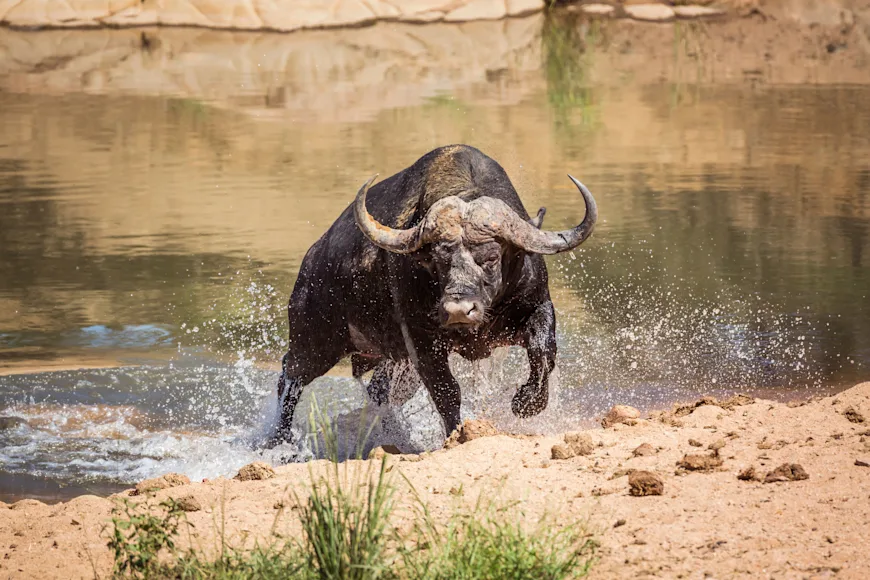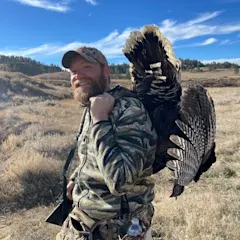A Texas man died earlier this month while hunting Cape buffalo in South Africa’s Limpopo Province. According to the safari outfit that hosted his hunt, Asher Watkins was charged and killed during an unprovoked attack that occurred while he was following up on a different buffalo with his tracker and professional hunter (PH).
Local reports say Watkins was killed almost instantly when the massive buffalo struck. “This is a devastating incident, and our hearts go out to his family and loved ones during this incredibly difficult time,” wrote Hans Vermaak, owner of the Coenraad Vermaak Safaris, in a statement posted to his website's homepage shortly after the attack. “This is deeply traumatic ... for all involved. The family and our team members who were present at the time are understandably shaken.”
Death and serious injury are real risks when it comes to hunting Cape buffalo. Male buffalo can weigh more than 1,500 pounds and stand 5-1/2 feet tall at the shoulder. They’re known for their aggressive nature and can reach speeds in excess of 35 mph. The animal has long been considered one of the world's most dangerous, and prized, big-game animals. Over the years, revered outdoor writers—from Robert Ruark to David E. Petzal—have brought those dangers to life in the pages of Field & Stream.
News of Watkins’ death set off a media firestorm around the world. The story has been covered by CNN, The Guardian, Newsweek, The New York Times, and NPR. But some in the hunting community feel that certain news reports about Watkins death have been openly anti-hunting and sensationalistic.
Robbie Kroger is the founder of the Origins Foundation. A 501c3 non-profit formerly called Blood Origins, Kroger's organization works to improve the perception of hunting with the non-hunting public. A native South African, he tells Field & Stream that he’s never seen a buffalo hunting death spark an all-out media frenzy the way Watkins’ did. “People die buffalo hunting all the time,” he says. “This isn’t an isolated incident. We hear about buffalo hunting deaths in PH groups from Zambia, Zimbabwe, Tanzania. It happens every year.”
Kroger knows the owner and several employees at Coenraad Vermakk Safaris, and he says some of the current headlines highlighting Watkins’ wealth are disingenuous, and possibly inaccurate. “These sensational headlines were crafted in a way that's meant to increase digital engagement around this incident,” he says.
One media report that Kroger took issue with was published by the Daily Beast. It featured a photo of Watkins with a mule deer killed on an unrelated hunt below the subhead “Hunter Becomes Hunted.” He says coverage like that likely gave rise to vitriolic comments from anti-hunters on Watkins’ Facebook page, some of which went so far as to celebrate his death. And Kroger fielded similar comments on his Instagram page, he says, after posting additional context about the accident.
In Kroger's opinion, the media landscape was primed to explode in the wake of Watkins’ death because of a Zimbabwean lion hunt that made international headlines and sparked online outrage back in June. But that lion, which the media has referred to as Blondie, was killed during a legal hunt, he says. “There was so much false rhetoric around the Blondie incident too,” he says, “to the point that the photo circulated by mainstream media outlets like BBC and CNN isn’t even a picture of the lion that was shot. They’re also reporting that laws were broken because the lion wasn’t 6-years-old or older. But there is no such law in Zimbabwe.”
Read Next: Judge Tells USFWS to Put Rocky Mountain Wolves Back on Endangered Species List
According to Kroger, the media coverage and internet uproar surrounding Watkins’ August 3 death went on to completely eclipse the Blondie incident. "The comments we’re seeing celebrating this accident are beyond tragic for Asher’s friends and family," he adds. "And they're already suffering enough."


